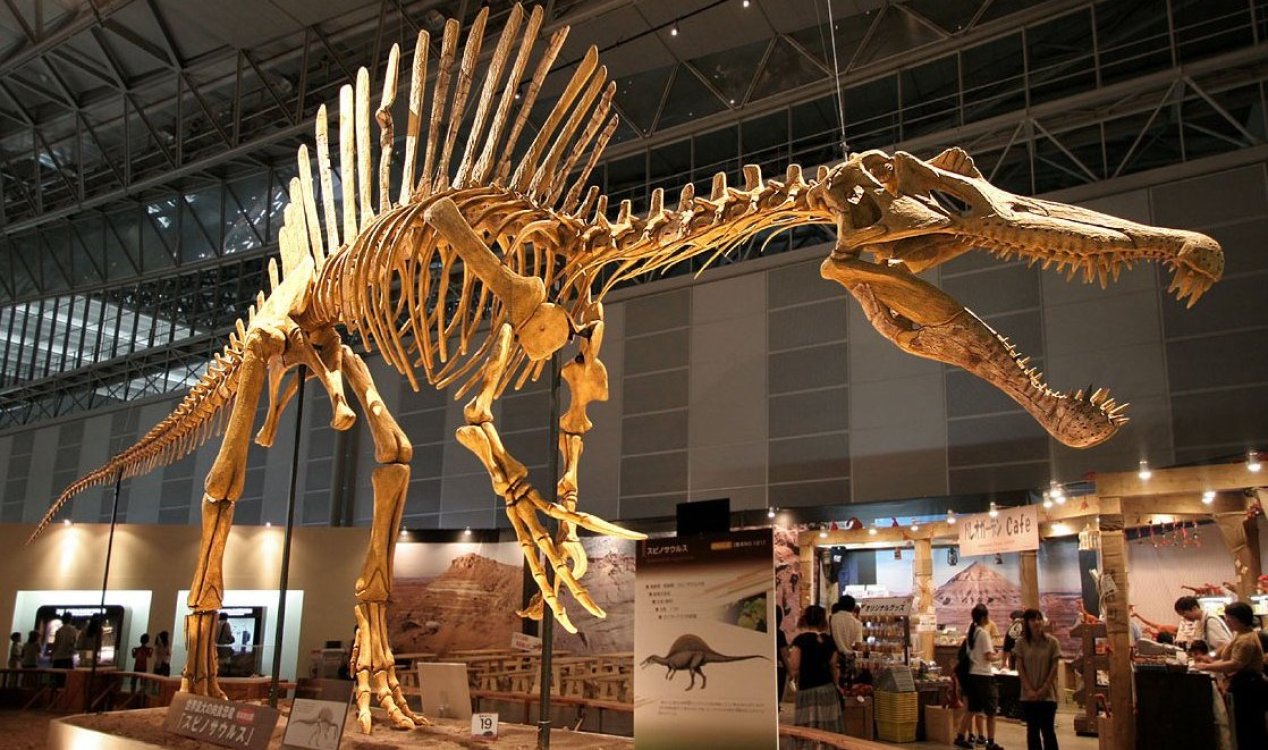Palaeontology
March 10, 2024 · 10 comments
10 comments

Spinosaurus was absolutely enormous. Image Credit: CC BY 2.0 Kabacchi
Whether or not it was actually a strong swimmer remains unclear, but it was thought to have spent a lot of its time in or around rivers and lakes a bit like crocodiles and alligators.
It was also thought to have feasted on both aquatic and terrestrial creatures.
One of the longest running mysteries surrounding Spinosaurus concerns whether it was adept at diving into the water after its prey or if it remained in the shallows and snatched its prey from the water like a heron, but now a new study headed up by experts at the University of Chicago may finally have the answer.
The key to understanding this was to analyze the creature's bone density, revealing that - in all likelihood - Spinosaurus was more of a "heron from hell" than a diving bird.
"We think Spinosaurus, one of the largest predatory animals ever to have evolved, needed extra bone strength to support its weight on its relatively short hind limbs," said lead author Paul Sereno.
"Spinosaurus was able to wade into waterways more than six feet deep without floating, where it could ambush fish of any size with its claws and jaws."
"But all while keeping its toes firmly anchored in the mud."
Source: Eurekalert.org | Comments (10)
Huge meat-eating dinosaur was 'heron from hell', claims new study
By T.K. RandallMarch 10, 2024 ·
 10 comments
10 comments
Spinosaurus was absolutely enormous. Image Credit: CC BY 2.0 Kabacchi
Researchers have solved the mystery of whether or not Spinosaurus was adept at pursuing its prey underwater.
This gargantuan predatory dinosaur, which prowled the waterways of what is now North Africa around 93-99 million years ago, was the longest terrestrial carnivore ever to walk the face of the Earth - measuring up to 46ft in length and weighing in at nearly 7.4 tons.Whether or not it was actually a strong swimmer remains unclear, but it was thought to have spent a lot of its time in or around rivers and lakes a bit like crocodiles and alligators.
It was also thought to have feasted on both aquatic and terrestrial creatures.
One of the longest running mysteries surrounding Spinosaurus concerns whether it was adept at diving into the water after its prey or if it remained in the shallows and snatched its prey from the water like a heron, but now a new study headed up by experts at the University of Chicago may finally have the answer.
"We think Spinosaurus, one of the largest predatory animals ever to have evolved, needed extra bone strength to support its weight on its relatively short hind limbs," said lead author Paul Sereno.
"Spinosaurus was able to wade into waterways more than six feet deep without floating, where it could ambush fish of any size with its claws and jaws."
"But all while keeping its toes firmly anchored in the mud."
Source: Eurekalert.org | Comments (10)

The Unexplained Mysteries
Book of Weird News
AVAILABLE NOW
Take a walk on the weird side with this compilation of some of the weirdest stories ever to grace the pages of a newspaper.
Click here to learn more

Support us on Patreon
BONUS CONTENTFor less than the cost of a cup of coffee, you can gain access to a wide range of exclusive perks including our popular 'Lost Ghost Stories' series.
Click here to learn more
UK and Europe
Ancient Mysteries and Alternative History
Ghosts, Hauntings and The Paranormal
United States and the Americas
Total Posts: 7,779,935 Topics: 325,660 Members: 203,950
Not a member yet ? Click here to join - registration is free and only takes a moment!
Not a member yet ? Click here to join - registration is free and only takes a moment!



































Please Login or Register to post a comment.